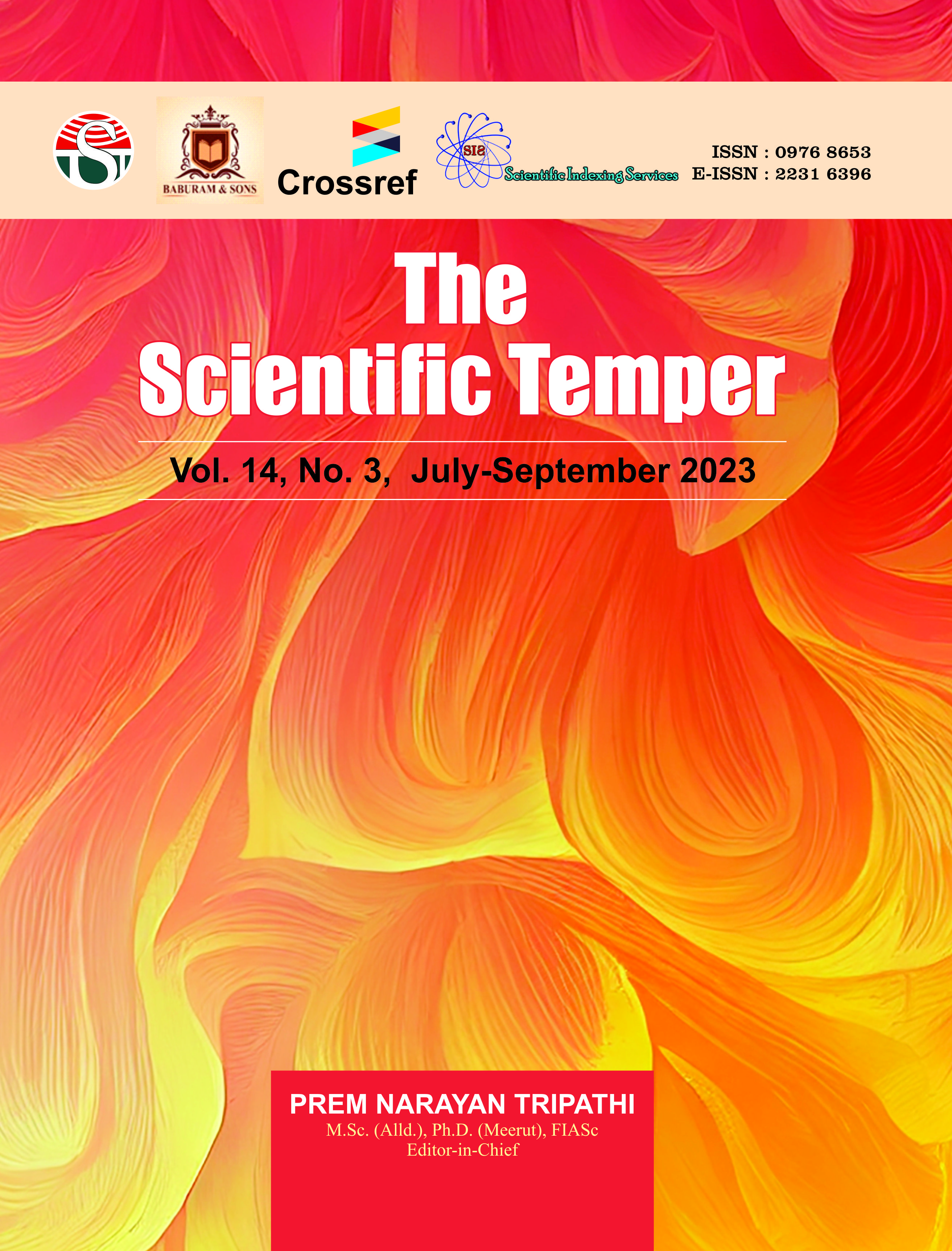Research on the current situation and influencing factors of college students learning engagement in a blended teaching environment
Downloads
Published
DOI:
https://doi.org/10.58414/SCIENTIFICTEMPER.2023.14.3.02Keywords:
Bended learning, Learning engagement, Teaching interaction theory.Dimensions Badge
Issue
Section
License
Copyright (c) 2023 The Scientific Temper

This work is licensed under a Creative Commons Attribution-NonCommercial-ShareAlike 4.0 International License.
Taking students from a university who participate in blended teaching of innovation and entrepreneurship as the research object, a model of the influencing factors of college students’ learning engagement in a blended teaching environment was constructed. This paper constructs a model of influencing factors of college students’ learning engagement in the blended teaching environment. The results showed that individual, teacher, and peer factors all have a certain degree of influence on learning engagement, but the degree of influence is significantly different. Teacher factors have the greatest impact, followed by individual factors, and peer factors have the smallest impact; Environmental factors have a moderating effect on the relationship between individual factors, teacher factors, peer factors, and learning engagement, but the direction of action is not consistent. The positive effect of individual factors, teacher factors, and peer factors on learning engagement increases with the increase of environmental factors, while the positive effect of teacher factors and peer factors on learning engagement weakens with the increase of environmental factorsAbstract
How to Cite
Downloads
Similar Articles
- Ganga Gudi, Mallamma V Reddy, Hanumanthappa M, Enhancing Kannada text-to-speech and braille conversion with deep learning for the visually impaired , The Scientific Temper: Vol. 16 No. Spl-1 (2025): The Scientific Temper
- Bajeesh Balakrishnan, Swetha A. Parivara, E-HRM: Learning approaches, applications and the role of artificial intelligence , The Scientific Temper: Vol. 14 No. 04 (2023): The Scientific Temper
- Priya Sharma, Jyoti Rana, Understanding Customer Awareness and effectiveness of Social Media Marketing in Banks , The Scientific Temper: Vol. 16 No. 09 (2025): The Scientific Temper
- Thangatharani T, M. Subalakshmi, Development of an adaptive machine learning framework for real-time anomaly detection in cybersecurity , The Scientific Temper: Vol. 16 No. 08 (2025): The Scientific Temper
- Nisha Patil, Archana Bhise, Rajesh K. Tiwari, Fusion deep learning with pre-post harvest quality management of grapes within the realm of supply chain management , The Scientific Temper: Vol. 15 No. 01 (2024): The Scientific Temper
- Deepa S, Sripriya T, Radhika M, Jeneetha J. J, Experimental evaluation of artificial intelligence assisted heart disease prediction using deep learning principle , The Scientific Temper: Vol. 14 No. 04 (2023): The Scientific Temper
- Raja S, Nagarajan L., Hybridization of bio-inspired algorithms with machine learning models for predicting the risk of type 2 diabetes mellitus , The Scientific Temper: Vol. 15 No. 03 (2024): The Scientific Temper
- S. Vanaja, Hari Ganesh S, Application of data mining and machine learning approaches in the prediction of heart disease – A literature survey , The Scientific Temper: Vol. 15 No. spl-1 (2024): The Scientific Temper
- M. Prabhu, A. Chandrabose, Improving the resource allocation with enhanced learning in wireless sensor networks , The Scientific Temper: Vol. 15 No. spl-1 (2024): The Scientific Temper
- A. Sandanasamy, P. Joseph Charles, Distributed SDN control for IoT networks: A federated meta reinforcement learning solution for load balancing , The Scientific Temper: Vol. 16 No. 06 (2025): The Scientific Temper
<< < 1 2 3 4 5 6 7 8 9 10 > >>
You may also start an advanced similarity search for this article.



